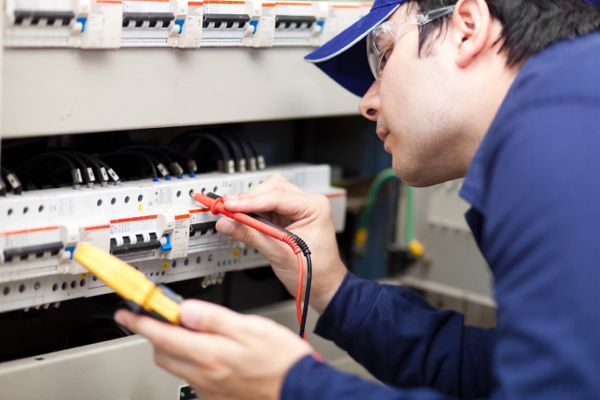Thowing Electrical Disconnects

It is important that when we throw (turn on or off) an electrical disconnect that we do it properly. When we utilize disconnects to lockout a machine some may think that it is just a matter of pulling down the switch, but there is much more to it.
Arc flash, which is a short circuit through the air that flashes over from one exposed live conductor to another conductor or to ground, can be one of the dangers in throwing a disconnect. These electrical explosions, similar to lightning, are instantaneous and contain so much energy that severe burns and even death can occur if you are directly in the path.
Recently we had an arc flash explosion on a busway. An employee re-energized a disconnect on the roof for a blower motor fan after unjamming the cyclone. The busway became the weak point of failure during the energization as the motor itself was never turned off. The disconnect was utilized as the on/off switch so when energized, this caused a huge flow of energy through the system that one of the areas on the busway could not handle.
It is important to turn off the motors and/or machines prior to throwing an electrical disconnect. Never utilize the disconnect itself as an on/off switch.
There is also a specific way to turn off a disconnect called the "Left Hand Rule". Most disconnect handles are mounted on the RIGHT side of the switch while the hinges are on the left. To turn off a disconnect:
- Stand to the right side of the switch, not in front of the box.
- Grab the disconnect with your LEFT hand
- Turn your body and face away from the switch
- Close your eyes.
- Take a deep breathe and hold it.
- Then "throw" the disconnect lever.
Using this method helps protect you if an arc flash does occur within the cabinet during the activity. This keeps you out of the direct line of fire as an arc flash explosion can blow the hinged door right off the electrical box. Taking a deep breathe and holding it ensures that if an explosion occurs, you dont gasp and breath in the flames.
Remember this rule next time you go to lockout a piece of equipment at the disconnect. Arc flash explosions are rare, but they can cause life changing injuries. These quick and easy measures help protect you from years of pain and suffering.
